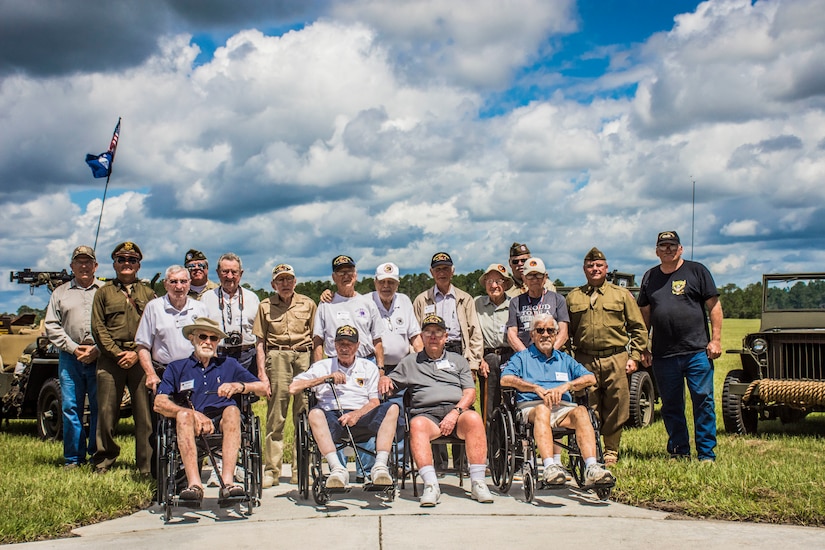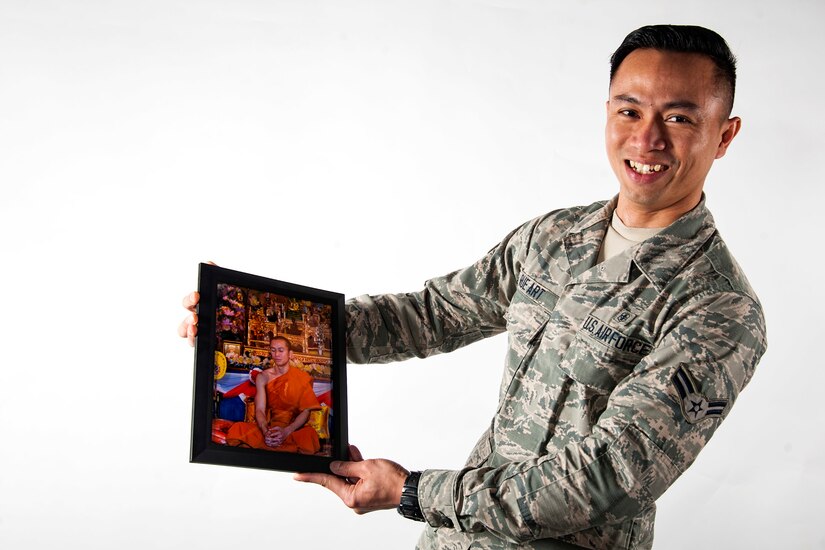By Army Staff Sgt. Carmen Fleischmann, Florida National
Guard
STARKE, Fla. -- For years, veterans of the Army’s 66th
Infantry Division have reunited to reminisce about their time together fighting
in World War II, to share stories of how their lives have changed since then,
and to recall fond memories of those brothers they lost along the way.
They have taken many journeys together, but none as
impactful as their June 15 return here to the Camp Blanding Joint Training
Center for their final reunion.
The 15 veterans of the 66th “Black Panther” Division and
their families were welcomed to the Camp Blanding Museum by post commander,
Army Col. Matt Johnson, who shared how he was personally impacted by their
stories.
Upon taking command of Camp Blanding in 2015, Johnson said
he would enjoy a morning run past the troop billeting areas on Quincy Avenue
which just happened to be located behind what used to be the headquarters for
the 66th Infantry Division.
“I remember vividly on those first mornings as I ran through
the area, how I observed the concrete foundations and the red brick chimneys
that still remain there today,” Johnson said. “It stirred within me the desire
to learn more about the history of this post and the soldiers and civilians who
once trained and served here.”
Johnson ran his usual route again on the morning of the
reunion to prepare for his meeting with veterans that trained at his post all
those years ago.
“I could still imagine the voices and the sounds of men
rising early, preparing for another day of training at Camp Blanding. I thought
of what you experienced then and what we experience today,” he said.
Veteran’s Story
Johnson said he was also touched by the story of one of the
veterans in attendance, Cyril Reshetiloff, who served in Headquarters Company,
2nd Battalion, 262nd Infantry Regiment. Reshetiloff was onboard the S.S.
Leopoldville, a Belgian passenger ship that was torpedoed and sunk by a German
submarine as it was crossing the English Channel to deliver members of the 66th
to fight at the Battle of the Bulge.
While Reshetiloff was able to climb his way out of the
wreckage and swim to safety, the 66th Infantry Division lost 14 officers,
including two battalion commanders, and 784 enlisted men in that attack.
Instead of continuing to the original battle, the Black
Panther Division was assigned to fight 60,000 Germans along the French Atlantic
coast. They later relocated to Koblenz, Germany, following the German surrender
in May 1945, where they conducted occupation duty and provided security at
German prisoner-of-war camps. The men who left to continue the fight after
Jerry Roetigers, President of the Panther Veterans
Organization, and one of the young men who trained at CBJTC and went on to
fight with the 66th Infantry Division, said the PVO has boasted as many as
2,500 members since it was created in the 1960s. He recalls emotional moments
when the PVO went to Europe and placed a wreath at the location where the
Leopoldville was sunk, and later when they placed one at the Tomb of the
Unknown Soldier.
The members of the 66th Infantry Division have been honored
for their sacrifice and praised for their legacy. Their final reunion at Camp
Blanding was no different. Dozens of soldiers, airmen and civilians turned out
in the hot summer sun to pay their respects to the brave men of the Black
Panther Division. Several World War II-era vehicles led the convoy of buses
around post, bringing back memories of the unit’s time here, but also providing
a reminder of how much time has gone by.
Choking back tears, Roetigers said, “None of this would have
ever happened if our buddies on the Leopoldville didn’t give their lives. They
gave their lives for us. It kept us out of the Battle of the Bulge, and who
knows … we all might have been buried in Belgium.”
Honoring World War II Veterans
Roetigers had his grandson, also named Jerry and a veteran
who served in Iraq, read an article written by his friend and previous PVO
President Frank Bartino, and the current CEO of the Panther organization,
Lenore Angelo, titled, “Roses in December.” The heartwarming words remembers
comrades that fell during the war and have passed away since.
Just before laying a wreath on the monument, each of the 12
Black Panther Division veterans in attendance received a 66th Infantry plaque
and a CBJTC challenge coin.
The veterans noticed on their tour of Camp Blanding that
while the post has changed tremendously over the years, the spirit of sacrifice
and service remains.
During the ceremony, currently serving Florida National
Guard soldiers and airmen stood proudly as they donned the same style “Black
Panther” Division patches as the heroes who have gone before them wore when the
66th Infantry Division was activated on April 15, 1943.
“We are very proud of the 66th Infantry Division’s record in
World War II, and we are extremely pleased that you have come home in 2018,”
said the president of the CBJTC Museum Association, George Cressman.









